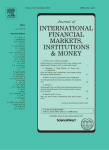A half-century diversion of monetary policy? An empirical horse-race to identify the UK variable most likely to deliver the desired nominal GDP growth rate
Highlights
- Post-crisis monetary policy has struggled to stimulate nominal demand.
- We model UK nominal GDP growth over 50 years with past monetary policy targets.
- The ‘general-to-specific’ methodology is used to find the best explanatory variables.
- Bank credit for GDP-transactions explains nominal GDP best.
- Interest rates and money aggregates do not influence nominal GDP significantly.
Abstract
The financial crisis of 2007–2008 triggered monetary policy designed to boost nominal demand, including ‘Quantitative Easing’, ‘Credit Easing’, ‘Forward Guidance’ and ‘Funding for Lending’. A key aim of these policies was to boost the quantity of bank credit to the non-financial corporate and household sectors. In the previous decades, however, policy-makers had not focused on bank credit. Indeed, over the past half century, different variables were raised to prominence in the quest to achieve desired nominal GDP outcomes. This paper conducts a long-overdue horse race between the various contenders in terms of their ability to account for observed nominal GDP growth, using a half-century of UK data since 1963. Employing the ‘General-to-Specific’ methodology, an equilibrium-correction model is estimated suggesting a long-run cointegrating relationship between disaggregated real economy credit and nominal GDP. Short-term and long-term interest rates and broad money do not appear to influence nominal GDP significantly. Vector autoregression and vector error correction modelling shows the real economy credit growth variable to be strongly exogenous to nominal GDP growth. Policy-makers are hence right to finally emphasise the role of bank credit, although they need to disaggregate it and specifically target bank credit for GDP-transactions.
Keywords
Bank credit; Credit channel; General-to-specific method; Growth; Monetary policy transmission; Quantitative Easing; Quantity Theory of Credit

